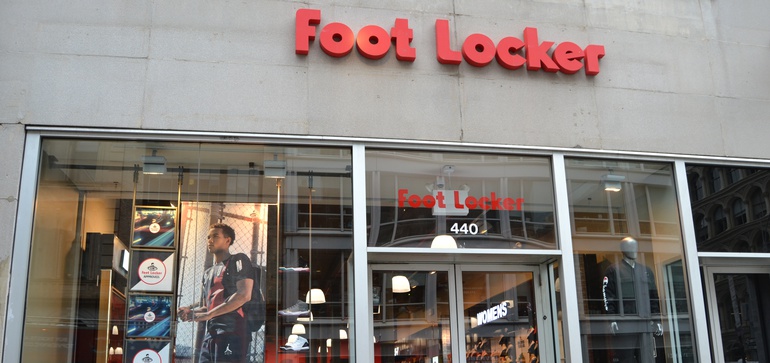FOOT LOCKER CITES PORT CONGESTION FOR NEARLY 24% DROP IN INVENTORY
Foot Locker is working to reroute its cargo in an attempt to avoid port congestion.
Author: Matt Leonard Published: March 8, 2021
Dive Brief:
Foot Locker is working to reroute its cargo in an attempt to avoid port congestion. Port delays reached two to three weeks in some cases and affected the company's inventory levels in Q4, CEO Dick Johnson said on the company's most recent earnings call.
CFO Lauren Peters said port congestion was one of the issues, along with store closures, that led to a 2.7% YoY drop in sales in the quarter.
"Once the product gets into our portion of the supply chain, you know I feel really confident that our team can move through the inventory and get it in the right place very quickly," Dick Johnson said. "We think that [inventory] will start to normalize over the quarter."
Dive Insight:
Foot Locker's inventory was down 23.6% at the end of Q4, as port delays have lengthened lead times for shippers and bottlenecked cargo.
"With respect to our inventory position, although we achieved our goal of being at a healthy composition by the end of the fiscal year, our levels are lower than we would like," Peters said.
Dick Johnson said the company is working to improve its inventory as it expects to see strong demand in the quarter — especially given the stimulus bill that passed after the company's earnings call.
"We're working with our vendor partners to look for alternative routing," he said in relation to port congestion and inventory levels.
Figuring out alternative ports of entry is a step multiple shippers are taking to avoid congestion at gateways, such as the Ports of Los Angeles and Long Beach.
"We're continually monitoring our supply chain, particularly the West Coast shipping ports. Both Long Beach and Los Angeles are clogged," Overstock.com CEO Jonathan Johnson said on the company's earnings call last month. "Shippers have been finding alternatives in Oakland and Seattle."
Shippers have been struggling with congestion for months now. An uptick in consumer demand for goods has sucked up containers and chassis and stressed ports that are working to process large amounts of volume. That has led to low inventory levels and extended lead times for many retailers.
Analysts expect demand to continue, with the National Retail Federation projecting record sales growth this year. Imports at container ports "are expected to grow dramatically" in the first half of the year, NRF said in a Monday news release.
Another method Foot Locker is using in an attempt to satisfy customer demand and shorten lead times is dropshipping. The retailer launched a dropshipping program last quarter with Nike that allows it to put more inventory on its website without holding it in its stores or distribution centers.
Source: Supplychaindive








main.comment_read_more